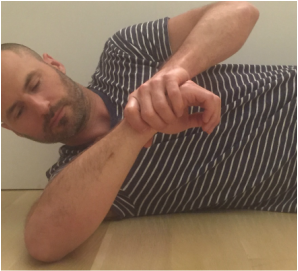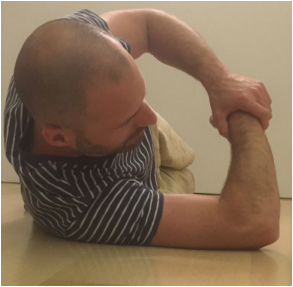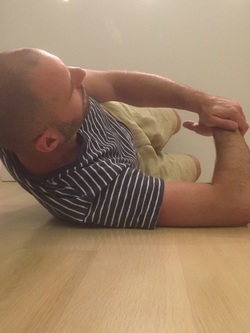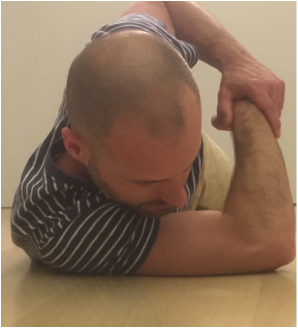|
In a previous post, I described what I feel to be the most important shoulder stretch. It is very important functionally to be able to reach out in front of you, and to reach overhead. While my focus in the prior post was frozen shoulder (otherwise known as adhesive capsulitis), the stretch I described is very useful for regaining function after rotator cuff surgery, shoulder labral repair surgery, and trauma. The anterior and inferior (front and bottom) shoulder capsule/ligaments are stretched using this technique. (Please note: If you are dealing with a frozen shoulder, this stretch may be too irritating to begin with. I recommend you begin with anterior, inferior capsule stretching using the best stretch for a frozen shoulder. You can come back here once you have regained the ability to raise your arm over your head again.) Sometimes, in spite of having done an outstanding job rehabilitating their shoulder following surgery, a patient may have some residual pain. Another common subset of patients presents with shoulder impingement syndrome or bursitis. These patients report pain which is usually lateral arm pain, aching in character, and may be worse at night. If forward elevation (reaching overhead), and abduction (reaching out to the side) are near normal, and rotator cuff strength is good, it is important to focus on the posterior capsule (ligaments in the back of the shoulder). A tight posterior capsule can cause abnormal shoulder mechanics. This can cause the shoulder ball (humeral head) to translate superiorly (upward) when raising the arm instead of rotating in the socket (glenoid). This pinches the rotator cuff and causes pain. The rotator cuff normally pushes down on the humeral head during rotation, but when it is irritated it will get lazy. Unfortunately, this compounds the problem, and allows the humeral head to further translate upward during activities. A cycle is then created whereby the problem gets progressively worse. We need to break this cycle. When I find the posterior capsule to be tight, I recommend using the sleeper stretch. This is a simple stretch that a patient can do on their own. As always, I recommend stretching every day, with no days off. I also recommend gentle progressive static stretching. That is, slowly applied pressure that is then held at the endpoint for relatively long duration. This means minutes rather than seconds. We are taking advantage of the viscoelastic nature of our soft tissues. The posterior capsule tends to be relatively thin tissue, and thus, this stretch does not require high force.  Posterior Capsule Stretch (Sleeper Stretch) Posterior Capsule Stretch (Sleeper Stretch) In these photos I am lying on my side. For this demonstration we will assume my right shoulder is the bad one. So, I am lying on the bad side. My elbow is out in front of me. The upper arm should be even with the shoulder. Both palms are facing toward my feet. Now gently and progressively apply force with the left hand. The goal should be to create rotation of the right palm toward the floor. This should create tension and stretching pain in the back of the shoulder. Ordinarily I would recommend resting your head on a pillow for comfort. I am not doing this to avoid obscuring the positioning.  Posterior Capsule Stretch (sleeper stretch), viewed from above. Neutral position. Posterior Capsule Stretch (sleeper stretch), viewed from above. Neutral position. Here is the view from above. Again note my upper arm is at shoulder level and my palms are facing toward my feet. Pressure is applied rotating my right shoulder internally, and pushing palms toward the floor.  Posterior capsule stretch with torso leaning slightly back. This is a less aggressive position. Posterior capsule stretch with torso leaning slightly back. This is a less aggressive position. Here is a less aggressive position. It may be good to begin this way. You can place a pillow behind your back to lean against. For all of these positions, resting your head on a pillow will allow more relaxation and thus a more pleasant stretch that you can hold for a longer time period.  Posterior capsule stretch (sleeper stretch) with torso leaning forward. This is a more aggressive position. Posterior capsule stretch (sleeper stretch) with torso leaning forward. This is a more aggressive position. This is the most aggressive sleeper stretch position. This will concentrate more force on the posterior capsule. It may not always be necessary to regain balance. I recommend testing each of this positions on the other (good) side so you have a benchmark to assess what is normal for you. Some key points:
0 Comments
|
Dr. GorczynskiOrthopedic Surgeon focused on the entire patient, not just a single joint. Categories
All
|

 RSS Feed
RSS Feed